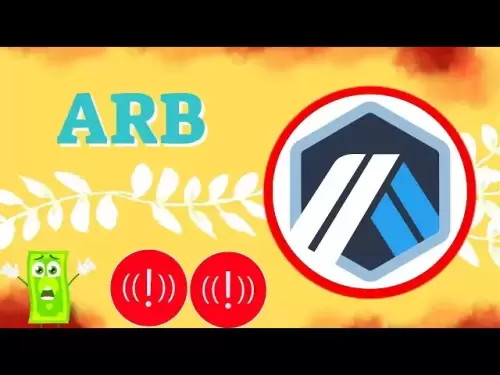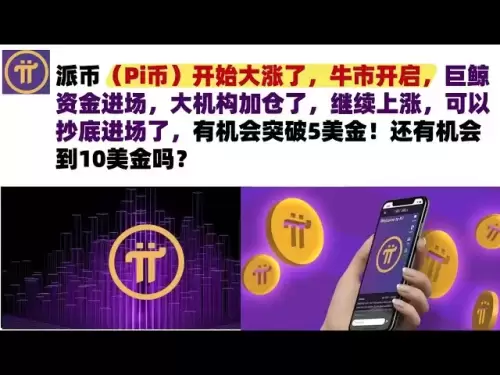-
 Bitcoin
Bitcoin $116700
0.48% -
 Ethereum
Ethereum $4213
6.27% -
 XRP
XRP $3.280
1.22% -
 Tether USDt
Tether USDt $1.000
0.02% -
 BNB
BNB $805.1
2.46% -
 Solana
Solana $180.2
2.65% -
 USDC
USDC $0.0000
0.02% -
 Dogecoin
Dogecoin $0.2412
8.50% -
 TRON
TRON $0.3356
-1.11% -
 Cardano
Cardano $0.8108
3.59% -
 Hyperliquid
Hyperliquid $43.89
8.53% -
 Chainlink
Chainlink $21.15
10.75% -
 Stellar
Stellar $0.4502
1.41% -
 Sui
Sui $3.935
4.69% -
 Bitcoin Cash
Bitcoin Cash $570.7
-1.75% -
 Hedera
Hedera $0.2636
3.28% -
 Avalanche
Avalanche $24.25
4.48% -
 Ethena USDe
Ethena USDe $1.001
0.03% -
 Litecoin
Litecoin $122.0
-0.08% -
 Toncoin
Toncoin $3.445
2.68% -
 UNUS SED LEO
UNUS SED LEO $8.979
-0.08% -
 Shiba Inu
Shiba Inu $0.00001379
6.73% -
 Uniswap
Uniswap $10.91
2.00% -
 Polkadot
Polkadot $4.106
5.39% -
 Dai
Dai $1.000
0.02% -
 Pepe
Pepe $0.00001227
9.07% -
 Bitget Token
Bitget Token $4.507
0.72% -
 Cronos
Cronos $0.1576
3.40% -
 Monero
Monero $272.0
-1.68% -
 Ethena
Ethena $0.7502
21.27%
How to read the DOGE trading depth chart?
The DOGE trading depth chart, showing bid and ask orders, helps traders gauge market sentiment and identify potential price movements for informed trading decisions.
Apr 19, 2025 at 10:29 pm
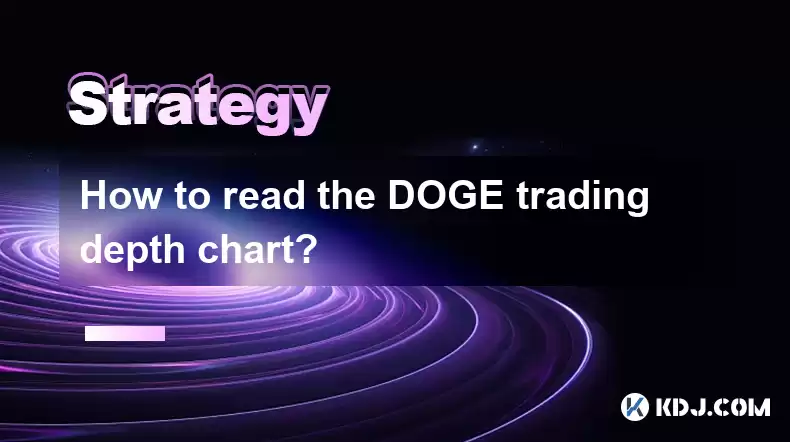
Understanding the DOGE trading depth chart is crucial for any trader looking to make informed decisions in the cryptocurrency market. The trading depth chart, also known as the order book depth chart, provides a visual representation of the supply and demand for DOGE at different price levels. This chart is essential for gauging market sentiment and identifying potential price movements. In this article, we will explore how to read and interpret the DOGE trading depth chart effectively.
What is a Trading Depth Chart?
A trading depth chart is a graphical representation of the buy and sell orders for a specific cryptocurrency, in this case, DOGE. The chart is divided into two sections: the left side represents the bid (buy) orders, and the right side represents the ask (sell) orders. The horizontal axis shows the price levels, while the vertical axis indicates the volume of orders at each price level. The depth chart helps traders understand the liquidity and potential price impact of their trades.
Components of the DOGE Trading Depth Chart
To read the DOGE trading depth chart, it's important to understand its key components. The chart consists of two main lines: the red line and the green line. The red line represents the cumulative volume of sell orders (asks), while the green line represents the cumulative volume of buy orders (bids). The point where these two lines meet is the current market price of DOGE. The steeper the lines, the less liquidity there is at that price level, indicating that larger orders may cause significant price movements.
Interpreting the Bid and Ask Sides
The bid side of the chart shows the total volume of DOGE that traders are willing to buy at various price levels. A long, flat bid line suggests strong demand and high liquidity at that price level. Conversely, a steep bid line indicates lower liquidity and potential resistance to price increases. On the ask side, the chart shows the total volume of DOGE that traders are willing to sell at different prices. A long, flat ask line suggests strong supply and high liquidity at that price level. A steep ask line indicates lower liquidity and potential resistance to price decreases.
Identifying Support and Resistance Levels
One of the key uses of the DOGE trading depth chart is to identify support and resistance levels. Support levels are price points where the demand for DOGE is strong enough to prevent the price from falling further. These levels are often indicated by a significant accumulation of buy orders on the bid side. Resistance levels, on the other hand, are price points where the supply of DOGE is strong enough to prevent the price from rising further. These levels are often indicated by a significant accumulation of sell orders on the ask side. By analyzing the depth chart, traders can anticipate potential price movements and adjust their strategies accordingly.
Analyzing Market Sentiment
The DOGE trading depth chart also provides valuable insights into market sentiment. A chart with a higher volume of buy orders compared to sell orders indicates bullish sentiment, suggesting that traders are optimistic about the future price of DOGE. Conversely, a chart with a higher volume of sell orders compared to buy orders indicates bearish sentiment, suggesting that traders are pessimistic about the future price of DOGE. By monitoring changes in the depth chart over time, traders can gauge shifts in market sentiment and make more informed trading decisions.
Using the Depth Chart for Trading Strategies
Traders can use the DOGE trading depth chart to develop and refine their trading strategies. For example, if the chart shows a significant accumulation of buy orders at a particular price level, a trader might consider placing a buy order just below that level to take advantage of potential price increases. Similarly, if the chart shows a significant accumulation of sell orders at a particular price level, a trader might consider placing a sell order just above that level to take advantage of potential price decreases. By carefully analyzing the depth chart, traders can identify optimal entry and exit points for their trades.
Practical Steps to Read the DOGE Trading Depth Chart
To effectively read the DOGE trading depth chart, follow these practical steps:
- Access the Depth Chart: Log into your preferred cryptocurrency exchange platform and navigate to the DOGE trading pair. Locate the depth chart, which is usually found alongside the order book and trading chart.
- Identify the Bid and Ask Lines: Look for the green line (bid) and the red line (ask) on the chart. The point where these lines intersect represents the current market price of DOGE.
- Analyze the Shape of the Lines: Observe the shape of the bid and ask lines. A flat line indicates high liquidity, while a steep line indicates low liquidity.
- Spot Support and Resistance Levels: Look for areas on the chart where there is a significant accumulation of buy or sell orders. These areas represent potential support and resistance levels.
- Assess Market Sentiment: Compare the volume of buy orders to the volume of sell orders. A higher volume of buy orders suggests bullish sentiment, while a higher volume of sell orders suggests bearish sentiment.
- Plan Your Trades: Use the information from the depth chart to plan your entry and exit points. Consider placing orders just below significant buy order accumulations or just above significant sell order accumulations.
Frequently Asked Questions
Q: Can the DOGE trading depth chart predict future price movements?
A: While the DOGE trading depth chart provides valuable insights into current market conditions and sentiment, it cannot predict future price movements with certainty. It is a tool that helps traders make more informed decisions based on the current state of the market.
Q: How often should I check the DOGE trading depth chart?
A: The frequency with which you should check the DOGE trading depth chart depends on your trading style and strategy. Day traders and scalpers may need to monitor the chart frequently, while swing traders and long-term investors may check it less often.
Q: Is the DOGE trading depth chart the same on all cryptocurrency exchanges?
A: The DOGE trading depth chart may vary slightly between different cryptocurrency exchanges due to differences in order book data and liquidity. It's important to understand the specific features and nuances of the depth chart on the exchange you are using.
Q: Can I use the DOGE trading depth chart to identify market manipulation?
A: While the DOGE trading depth chart can provide clues about potential market manipulation, such as large orders at specific price levels, it is not a definitive tool for identifying manipulation. It should be used in conjunction with other market analysis tools and techniques.
Disclaimer:info@kdj.com
The information provided is not trading advice. kdj.com does not assume any responsibility for any investments made based on the information provided in this article. Cryptocurrencies are highly volatile and it is highly recommended that you invest with caution after thorough research!
If you believe that the content used on this website infringes your copyright, please contact us immediately (info@kdj.com) and we will delete it promptly.
- Trump, Crypto Vehicle, and WLFI Tokens: A New York Minute on the Latest Buzz
- 2025-08-10 00:30:12
- Wheat Penny Fortune: Unearthing Valuable Coins in Your Pocket Change
- 2025-08-10 00:35:19
- AI Coin Mania: Dubai Millionaires Eye 20x Gains!
- 2025-08-09 23:10:12
- ChatGPT's Hot Takes: Meme Coins to Buy Now for a Wild 2025!
- 2025-08-09 23:10:12
- Jurassic Park Vibes in Your Pocket: The Colourful Canadian Coin Featuring a Dinosaur Eye
- 2025-08-09 23:50:12
- Altcoins on the Radar: VeChain, Ethereum, and the Shifting Crypto Landscape
- 2025-08-09 23:50:12
Related knowledge
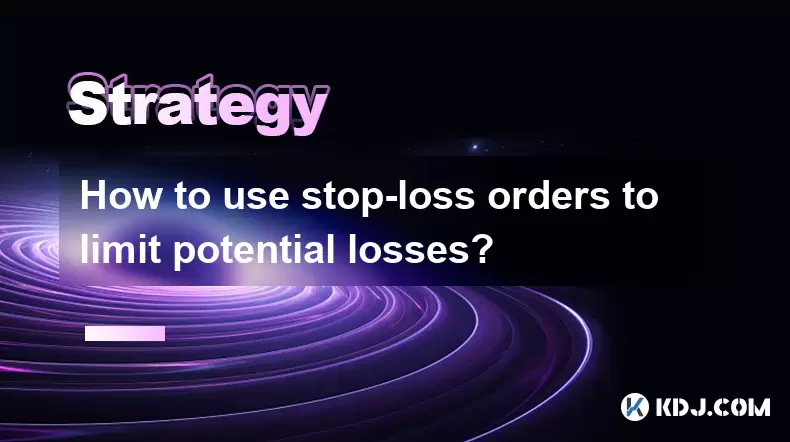
How to use stop-loss orders to limit potential losses?
Aug 08,2025 at 02:01pm
Understanding Stop-Loss Orders in Cryptocurrency TradingA stop-loss order is a risk management tool used by traders to automatically sell a cryptocurr...

How to read cryptocurrency charts and use technical analysis?
Aug 08,2025 at 11:08am
Understanding the Basics of Cryptocurrency ChartsCryptocurrency charts are graphical representations of price movements over time. These charts are es...
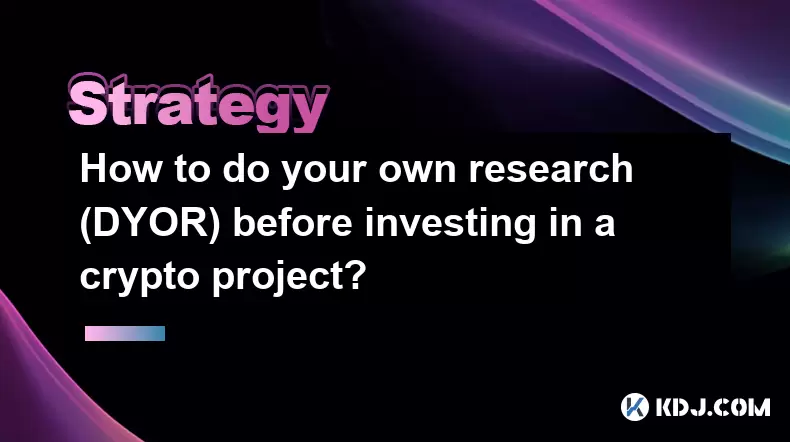
How to do your own research (DYOR) before investing in a crypto project?
Aug 08,2025 at 09:07pm
Understanding the Core Principles of DYOR in CryptocurrencyEngaging in due diligence before investing in any cryptocurrency project is essential to mi...
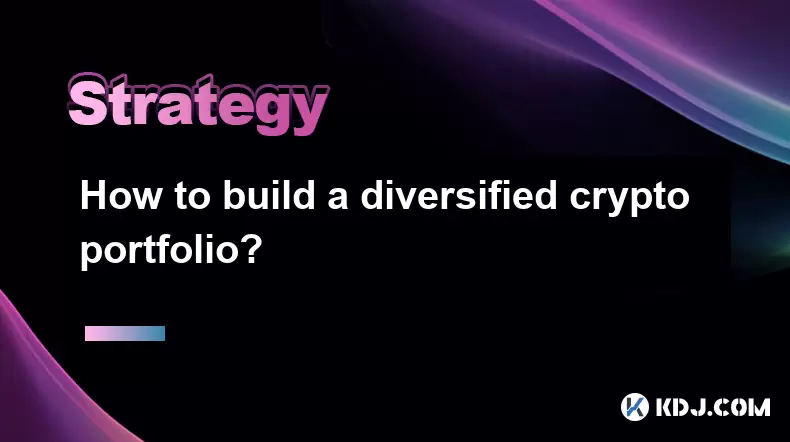
How to build a diversified crypto portfolio?
Aug 09,2025 at 12:21pm
Understanding the Importance of Diversification in CryptoDiversification in the cryptocurrency space is a strategy used to reduce risk by spreading in...

How to avoid common crypto investment mistakes?
Jul 13,2025 at 01:35am
Understanding the Risks of Crypto InvestmentInvesting in cryptocurrency can be highly rewarding, but it also comes with significant risks. One of the ...

What is a long-short crypto strategy?
Jul 15,2025 at 10:56am
Understanding the Basics of a Long-Short Crypto StrategyA long-short crypto strategy is an investment approach where traders simultaneously take long ...

How to use stop-loss orders to limit potential losses?
Aug 08,2025 at 02:01pm
Understanding Stop-Loss Orders in Cryptocurrency TradingA stop-loss order is a risk management tool used by traders to automatically sell a cryptocurr...

How to read cryptocurrency charts and use technical analysis?
Aug 08,2025 at 11:08am
Understanding the Basics of Cryptocurrency ChartsCryptocurrency charts are graphical representations of price movements over time. These charts are es...

How to do your own research (DYOR) before investing in a crypto project?
Aug 08,2025 at 09:07pm
Understanding the Core Principles of DYOR in CryptocurrencyEngaging in due diligence before investing in any cryptocurrency project is essential to mi...

How to build a diversified crypto portfolio?
Aug 09,2025 at 12:21pm
Understanding the Importance of Diversification in CryptoDiversification in the cryptocurrency space is a strategy used to reduce risk by spreading in...

How to avoid common crypto investment mistakes?
Jul 13,2025 at 01:35am
Understanding the Risks of Crypto InvestmentInvesting in cryptocurrency can be highly rewarding, but it also comes with significant risks. One of the ...

What is a long-short crypto strategy?
Jul 15,2025 at 10:56am
Understanding the Basics of a Long-Short Crypto StrategyA long-short crypto strategy is an investment approach where traders simultaneously take long ...
See all articles





















